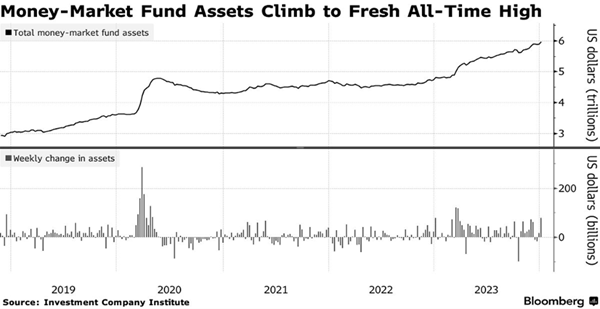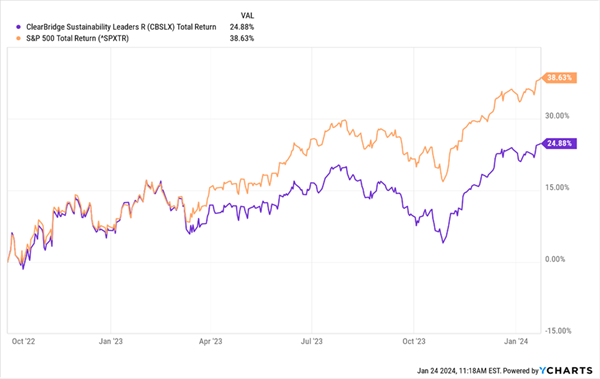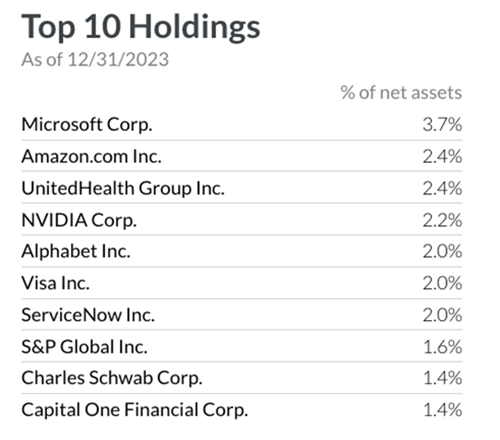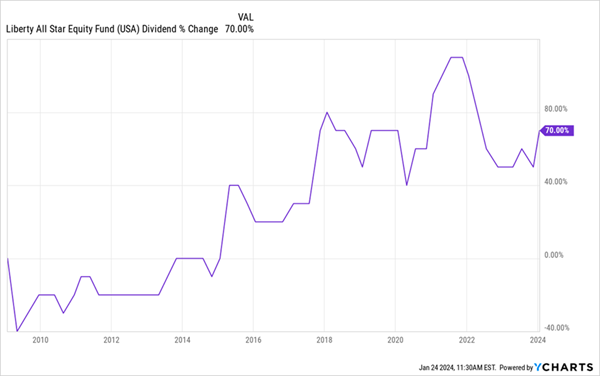Worried stocks are going to crash after breaking fresh all-time highs?
Well, let me allay those concerns with not one, not two, but … six trillion reasons why that fate—pushed more and more in the media these days—is far from inevitable (or even likely).
That six trillion number is the hoard parked in money-market funds: those “as-good-as-cash” options for people who don’t really want to grow their money but want to keep it “safe” and have access to it.
The 2022 sell-off and rapid rise in interest rates in 2023 caused money-market balances to soar, doubling from where they were just five years ago—a far bigger increase than the historical trend.

That is a lot of cash, and the likelihood that much of it will flow into stocks, given the market’s more-optimistic mood these days, is why we’re unlikely to see a sharp pullback soon, as counterintuitive as that seems given the markets’ big run-up.
The fact that $6 trillion is on the sidelines and isn’t in stocks, bonds and real estate—where it would go under “normal” circumstances—is a big deal. That’s about a third of the entire GDP of the United States. Having that much dry powder means there’s plenty of room for stocks to fly before we can call this a bubble.
So, what’s the best way for us to profit in a market like this?
One option many folks will go with is the kind of mutual fund many companies offer to workers in their 401 (k) plans, although it’s well-known that many of those funds perform poorly and are offered because employers get benefits from the high fees charged by the fund managers that run them.
My conspiracy theory is that companies also do this because they don’t want employees to make too much money and retire early. There’s even a phrase for that now in the corporate world: “calling in rich.”
An example is a fund like the ClearBridge Sustainability Leaders Fund (CBSLX). The fund has an environmental, social and governance (ESG) mandate that has weighed on its returns, even though it holds many S&P 500 standouts, like Microsoft (MSFT) and Apple (AAPL).
CBSLX Lags the Market

Beyond that is the popular option of an index fund like the SPDR S&P 500 ETF Trust (SPY), which, as the name says, holds the entire S&P 500 and thereby tracks the index.
SPY doesn’t make our list because it yields just 1.4%, so you’d need to put $7.1 million into a retirement account to get $100,000 in passive income from this fund.
There is a better option, which I’ve saved for last here: a closed-end fund (CEF) called the Liberty All-Star Equity Fund (USA).
Beyond its patriotic ticker, we see that this fund (current yield: 9.7%) holds many of the same stocks as SPY, like Microsoft and Apple, as well as UnitedHealth Group (UNH), Visa (V), and Capital One Financial (COP).

Source: All-Star Funds
Not just that, but USA has delivered a solid 661.5% return in the last 15 years, based on the fund’s market price:
Delivering Big Returns for a Long Time

That isn’t even the best part. USA not only returns the profits of the broader stock market in a well-diversified fund, it also delivers a large slice of those profits as dividends. Thanks to USA’s 9.7% yield, you need just $1,030,928 invested to produce a $100,000 annual income—or about a seventh of the $7.3 million you’d need to get the same from SPY.
There’s good reason to believe that this payout will grow. All-Star Funds has a policy of paying out 10% of its net asset value (NAV, or the value of its underlying portfolio) as dividends every year, and the fund’s total NAV return has been 12.6% per year on average over the last 15 years. (With CEFs, per-share NAV returns often differ from a fund’s market price–based returns, in part due to the fact that CEFs have more or less the same share count for their entire lives.)
That means USA has earned 121% of its payouts during this period, which also suggests it can sustain its dividend for a long time.
That’s shown up in the upward swing we’ve seen in USA’s payout over the last 15 years:
USA Offers a High-Yielding Payout That Grows

We can also look forward to some upside generated by the fund’s discount to net asset value (NAV). Right now, the shares trade for around 3% below NAV, under the five-year average of a 0.9% discount. That’s not a huge gap, to be sure, but as it closes it will give the market price an extra push.
All of these reasons make CEFs superior to ETFs and mutual funds when it comes to investing in the market—especially now, before our money-market fans get bored of low returns and move a large portion of their $6 trillion stash back into stocks.
We Want More Than High Dividends—We Want ’Em Monthly, Too!
USA is a great fund that’s delivered big returns (and mostly as dividend cash, to boot!) to its investors over many years. That’s the beauty of CEFs, and why we always choose the best of these funds over any ETF or (heaven forbid!) mutual fund.
But I get that not everyone wants a dividend like USA’s, which tends to fluctuate. Plenty of folks—especially those in or near retirement—demand steady payouts they can count on to keep their bills paid and their investment plans rolling ahead.
CEFs are a lifesaver here, too: As I write this, more than half of all CEFs pay dividends monthly. And my 5 top picks among these monthly payers go one better, throwing off a rich 9%+ average yield now, too.
That’s about the same as USA, so you’re not giving up yield in exchange for regular monthly payouts here.
These 5 funds all trade at attractive discounts, but I don’t expect that to last as the market moves higher in the long run, buoyed by that $6-trillion cash influx.
The critical details on these 5 funds are available in an exclusive Special Report I’m urging all dividend investors to read immediately. Click right here and I’ll give you more details on these 5 monthly payers, a look at how monthly payouts can give you a big edge over investors stuck with quarterly payers and a chance to download this FREE Special Report.

Recent Comments